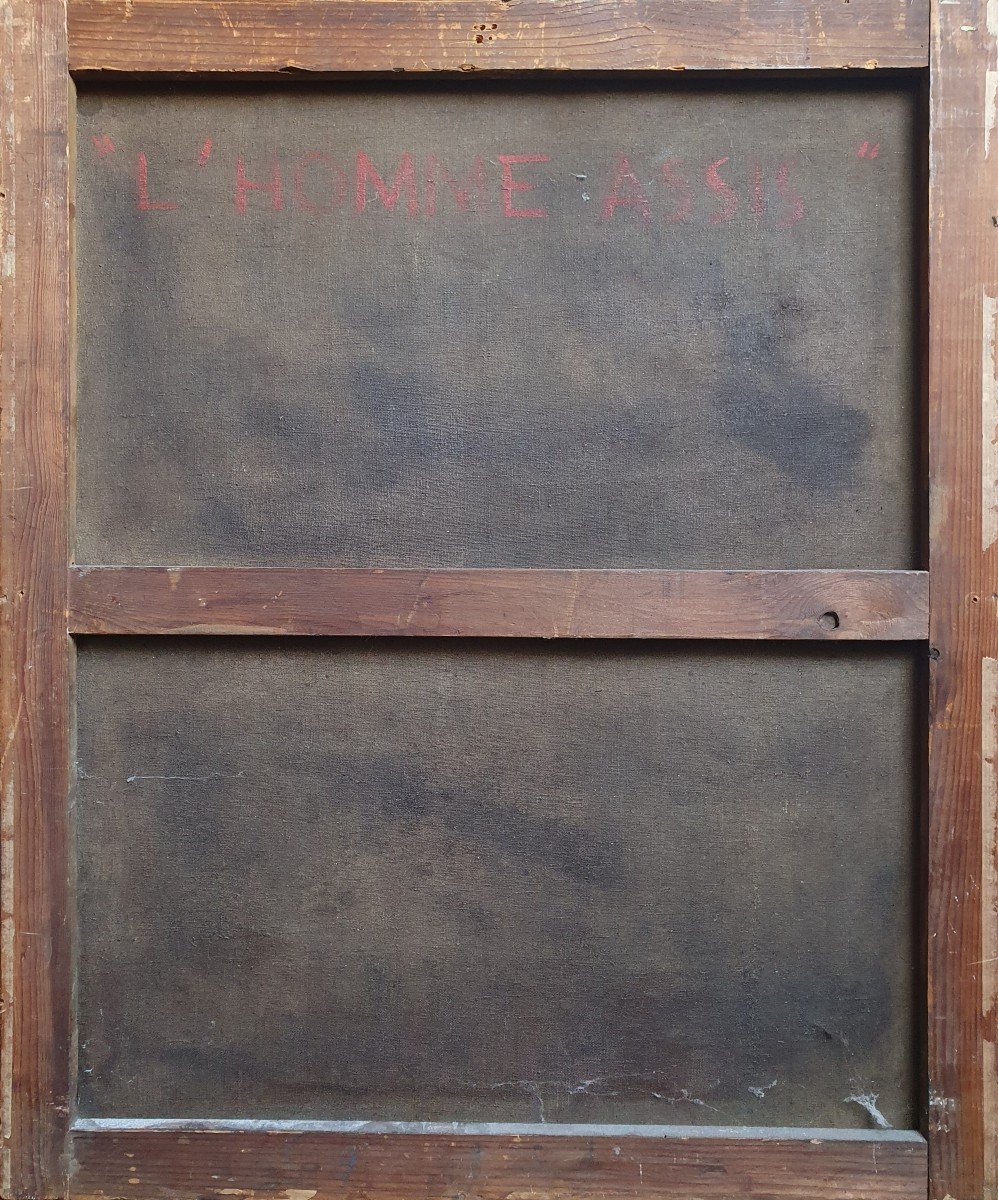The seated man
Probably a self-portrait of the painter astride a straw chair with a bottle of red wine.
Inscription on the back: "The seated man"
Signature lower right Desnoyer
Good condition
Dimensions: 65 x 54 cm
François Desnoyer, born in Montauban (Tarn-et-Garonne) on September 30, 1894 and died in Saint-Cyprien (Pyrénées- Orientales) on July 21, 1972, is a French figurative painter. He was introduced to Antoine Bourdelle who took him under his wing. The so-called “dictionary” period begins for him. He seeks to learn, especially techniques, by all means available. But quickly, the Great War broke out. Desnoyer was part of the first wave of soldiers sent to the front. He engraves with a chisel the names of his comrades who fell under bullets and shells. Seriously injured in 1917, he obtained the rank of sergeant. He draws during long waits, so as not to give in to despair. From this time remains the series of drawings sent to his grandmother, in which his soldier friends are represented, never in action, always caught in their humanity being put to the test. He was taken prisoner in 1918, when his mother died. When the war was over, he returned to Montauban. He returned to Paris in 1921 to enter the decorative arts. He became a professor of decorative arts in 1938, very close to the workshop he had owned on rue Tournefort since 1922. During these times, Desnoyer was especially supported in his personal enterprise by his collectors, of which Charles Malpel was one, who reinforced him in his search for color. During the 1930s, he led a dual career as a teacher and an artist. He only exhibits a few times, but is very active in sending works to appear in exhibitions. In 1932, Desnoyer met the woman who would become his second wife, Suza. He then traveled with her to Czechoslovakia where she was from, and produced a number of local portraits and landscapes, notably at the Bakulé Institute. The paintings from this period are still very precise and imbued with the influence of Gauguin, particularly in his back nudes. But the real turning point was 1934, when Desnoyer took part in the Salon des Indépendants, alongside Lotiron, Goerg and especially Gromaire. All three would become his friends and influences for a long time. It should be noted that friendship and work were one and the same for Desnoyer[personal interpretation], the artists he was most immersed in (apart from Cézanne and Gauguin) were his friends, with whom he exchanged and joked. regularly. It is from this type of daily interaction that the inflections of his work are born: through the force of proximity and discussion. From Fauvism and his treatment of color, for example, he retains much more the influences of his friend Marquet with whom he shared the studio, than the canonical paintings of Matisse, whom he apparently never met. only once and with whom he did not exchange. The same goes for the rigorous constructions, which he retains from Gromaire or Lhote, much more than from the orthodox cubists. In 1940, he stayed with Albert and Marcelle Marquet, who had become his close friends. In the beast's workshop, he worked at the 1940 stopover while Marquet painted his portrait and offered it to him. When the war broke out in earnest, Desnoyer remained in Paris and had to regretfully leave Marquet, who had left for Algeria. He was then mobilized for the second time: he was forty-six years old. During the war, he painted the portrait of Déborah Lipchitz, a refugee with Michel Leiris, a painting which he donated to the Tel Aviv museum, in memory of this deported ethnographer. He houses a clandestine publishing house in his studio, while continuing his activities as a teacher and artist. At the end of the war, when the Museum of Modern Art of the City of Paris reopened, it had a room dedicated to Desnoyer, between Chagall and Gromaire. At the end of the Second World War, Desnoyer settled in Sète at the invitation of Jean Vilar. It is this city that he will quickly choose to spend his summers there, then to live there all year round. But Desnoyer still traveled a lot, as in 1948 when Marcelle Marquet invited him to Algeria to her late husband's workshop. A series of orientalist paintings will be born from this trip, as from all those undertaken by Desnoyer. Having become a friend of Camille Descossy in Montpellier, he discovered the first Prades festival in 1950. At the same time he discovered Catalonia and its artists: Gili, Frère first. It was thanks to artists living near Perpignan that Desnoyer met Jean Olibo, then mayor of Saint-Cyprien, who later convinced him to create a foundation in his city. In 1952, Desnoyer participated in the Venice Biennale with Fernand Léger and Raoul Dufy, from Le Havre who had become his friend.


































 Le Magazine de PROANTIC
Le Magazine de PROANTIC TRÉSORS Magazine
TRÉSORS Magazine Rivista Artiquariato
Rivista Artiquariato